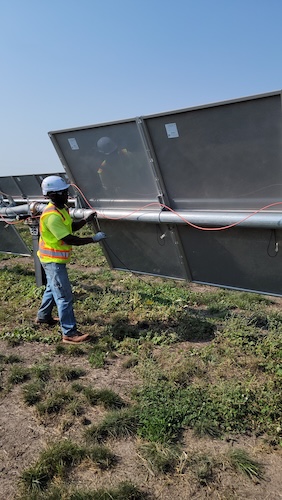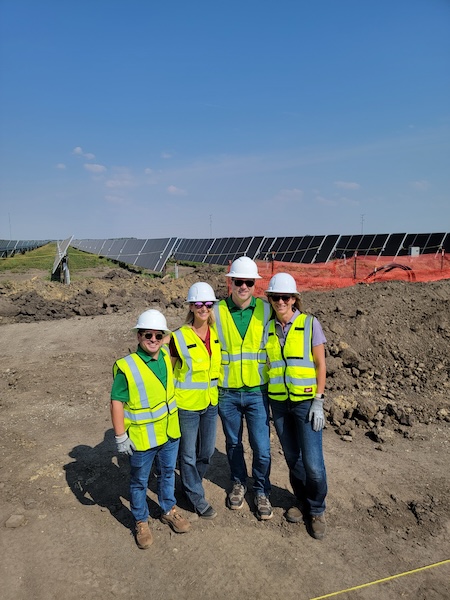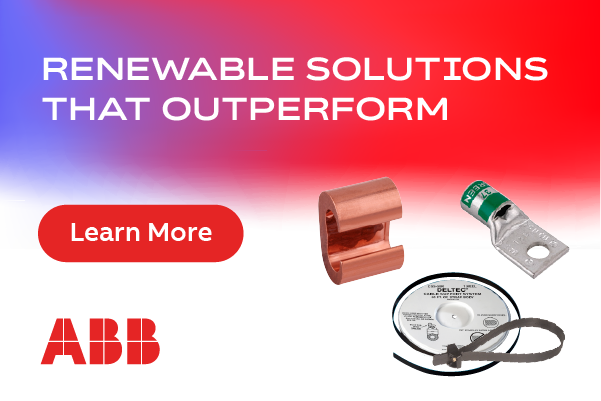Designing for Efficiency
In utility-scale solar, efficiency isn’t just measured in output—it’s engineered from the ground up through thoughtful system design.
As the solar industry matures and margins tighten, design efficiency has become a defining factor in project success. It's no longer enough to simply install panels and hope for the best. Today’s most profitable utility-scale solar projects are built on a foundation of smart, efficient design that reduces complexity, accelerates deployment, and enhances long-term performance.
While technology has advanced and procurement strategies have evolved, many of the persistent challenges in solar — delays, rework, unexpected costs — can still be traced back to one root cause: poor system design. Design decisions made early on shape every phase of a project’s lifecycle, from construction to commissioning to maintenance. When efficiency is built in from the start, the entire system benefits.
 Efficiency begins at the drawing board
Efficiency begins at the drawing board
The design phase shapes everything that follows. A well-planned system can simplify procurement, reduce the chance of field errors, lower installation costs, and minimize long-term maintenance.
Take wire management, for example. In large-scale solar, poor cable design or routing can lead to significant inefficiencies: tangled cable runs, voltage drop, excessive material use, and long troubleshooting times during commissioning. Strategic routing and properly sized conductors reduce line losses and improve safety. Grouping circuits for better access or using pre-terminated assemblies with clearly labeled connectors can drastically reduce the need for field terminations and rework.
Equally important is minimizing variability. Pre-kitted wiring solutions and plug-and-play assemblies eliminate guesswork, simplify inspections, and reduce reliance on highly skilled labor. The result is faster construction with fewer surprises.
Simplifying without sacrificing scalability
The best system designs balance simplicity with flexibility. While no two solar sites are identical, standardization offers major advantages. This includes using uniform layout patterns, modular electrical assemblies, and repeatable installation procedures.
Standardization doesn’t mean sacrificing adaptability. Thoughtful designs incorporate configurable elements such as harness lengths or grounding methods to accommodate unique site conditions while still enabling consistency. This reduces training needs, shortens ramp-up time, and limits costly mistakes.
Long-term, these design choices pay off in streamlined operations. Uniform systems are easier to maintain, spare parts are simpler to manage, and service technicians can quickly diagnose issues across sites.
Environmental considerations are design decisions
Designing for efficiency also means designing for the environment. Harsh conditions —whether extreme heat, cold, UV exposure, wind, or dust — demand systems that can withstand the elements without compromise.
Engineered materials are part of the solution, but design choices carry equal weight. In desert climates, cable placement must account for daily temperature swings. In coastal regions, corrosion protection is critical. Proper layout planning can prevent hotspots, shading, or premature wear.
By proactively designing for site-specific risks, developers can reduce the likelihood of degradation, downtime, or unexpected maintenance, and extend system life.
Lessons from the field: What happens when design is an afterthought
Early design failures and lack of coordination remain common challenges in the field. Here’s a real-world example.
During the design phase of the project, DC harness wire management was thoughtfully discussed, and a routing plan was developed to avoid moving tracker components. The goal was to prevent pinching and long-term cable damage by guiding the harness around these elements. As a result, additional cable length was built into the harness extenders during manufacturing.
Unfortunately, this routing strategy was never documented in the construction drawings. During preliminary installation modeling, the contractor proposed a more direct routing method — one that deviated from the original plan. This revised approach was not coordinated with the harness vendor.
While short cables can derail a project, excessively long cables can be equally problematic. In this case, approximately 10,000 extender cables were found to be 10 to 40 feet too long. To meet the project owner’s expectations, most cables had to be trimmed and re-terminated on one end, which was a costly, time-consuming process that also voided the original manufacturer’s warranty.
This situation could have been entirely avoided with comprehensive, clearly documented wire management drawings before installation began.
When design is deprioritized, the consequences emerge quickly: field adjustments, schedule delays, and rework that increases cost and risk. In some cases, improperly routed or sized conductors can lead to overheating, voltage drop, or performance issues that only surface after the system is energized. These issues are not just expensive, they’re preventable. And they trace back to decisions made during the earliest stages of design.

Design choices drive ROI
At the end of the day, smart design directly impacts return on investment. Efficient systems reduce labor hours, minimize waste, and enhance performance, improving cost per watt and long-term financial outcomes.
Speed also matters. Projects designed for buildability are more likely to meet tight construction windows or interconnection deadlines. Even modest time savings in installation can add up dramatically across multi-megawatt projects. Thoughtful design reduces uncertainty. And in an industry where every day counts, that certainty is a powerful competitive advantage.
Conclusion: Design is the unsung hero of solar success
Behind every high-performing, cost-effective, on-time build is a design that made execution possible. In utility-scale solar, the design has been prioritized throughout the recent years to ensure efficiencies from conception to completion. By treating design as a strategic lever rather than an afterthought, developers can reduce risk, increase reliability, and better position themselves for scale. Clean energy at scale doesn’t just depend on what materials are used — it depends on how well they’re planned, integrated, and installed. The most resilient solar projects don’t just start with good equipment. They start with smart design.
Mason Phillips is Director at Paige Renewable Energy, which serves utility-scale solar, wind, and battery storage applications, and offers support from the early project stages through completion.
Paige Renewable Energy | paigerenewableenergy.com
Author: Mason Phillips
Volume: 2025 September/October









.png?r=5327)
.png?r=1485)


